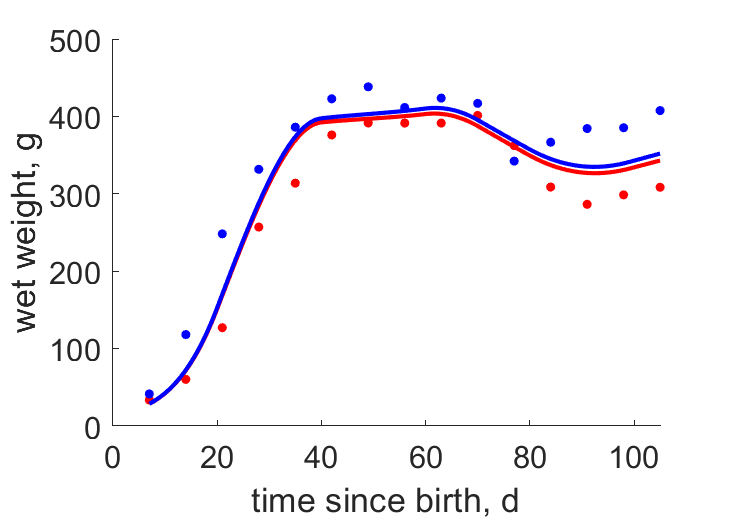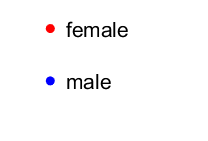Predictions & Data for this entry
| Model: std | climate: Af | migrate: | phylum: |
| COMPLETE = 2.5 | ecozone: TA | food: biHs | class: |
| MRE = 0.044 | habitat: 0iTf | gender: Dg | order: |
| SMSE = 0.004 | embryo: Tnwf | reprod: O | family: |
Zero-variate data
| Data | Observed | Predicted | (RE) | Unit | Description | Reference |
|---|---|---|---|---|---|---|
| ab | 28.25 | 30.68 | (0.08613) | d | age at birth | avibase |
| tx | 84 | 83.29 | (0.0085) | d | time since birth at fledging | avibase |
| tp | 252 | 221.2 | (0.1224) | d | time since birth at puberty | guess |
| tR | 730 | 730 | ( 0) | d | time since birth at 1st brood | guess |
| am | 1.04e+04 | 1.031e+04 | (0.008682) | d | life span | avibase |
| Ww0 | 21.05 | 21.03 | (0.001106) | g | initial wet weight | avibase |
| Wwb | 17 | 16.48 | (0.03075) | g | wet weight at birth | guess |
| Wwi | 560.8 | 571.2 | (0.01847) | g | ultimate wet weight | avibase |
| Wwim | 561.5 | 589.5 | (0.04978) | g | ultimate wet weight for male | avibase |
| Ri | 0.005479 | 0.005297 | (0.03328) | #/d | maximum reprod rate | avibase |
Uni- and bivariate data
| Data | Figure | Independent variable | Dependent variable | (RE) | Reference |
|---|---|---|---|---|---|
| tW |   | time since birth | wet weight | (0.08674) | RachNura2020 |
Pseudo-data at Tref = 20°C
| Data | Generalised animal | Eclectus roratus | Unit | Description |
|---|---|---|---|---|
| v | 0.02 | 0.02097 | cm/d | energy conductance |
| p_M | 18 | 672.4 | J/d.cm^3 | vol-spec som maint |
| k_J | 0.002 | 0.0314 | 1/d | maturity maint rate coefficient |
| k | 0.3 | 0.3383 | - | maintenance ratio |
| kap | 0.8 | 0.9264 | - | allocation fraction to soma |
| kap_G | 0.8 | 0.8086 | - | growth efficiency |
| kap_R | 0.95 | 0.95 | - | reproduction efficiency |
Discussion
- Body temperatures are guessed
- scaled functional response turned out to vary during handrearing
- Males are assumed to differ from females by {p_Am} only
- mod_1: Pseudo-data point k is used, rather than k_J; Data set tp and parameter t_R are added, the latter replacing clutch interval t_N. Postnatal T is based on PrinPres1991, see get_T_Aves. See further the revision page, theme puberty
Bibliography